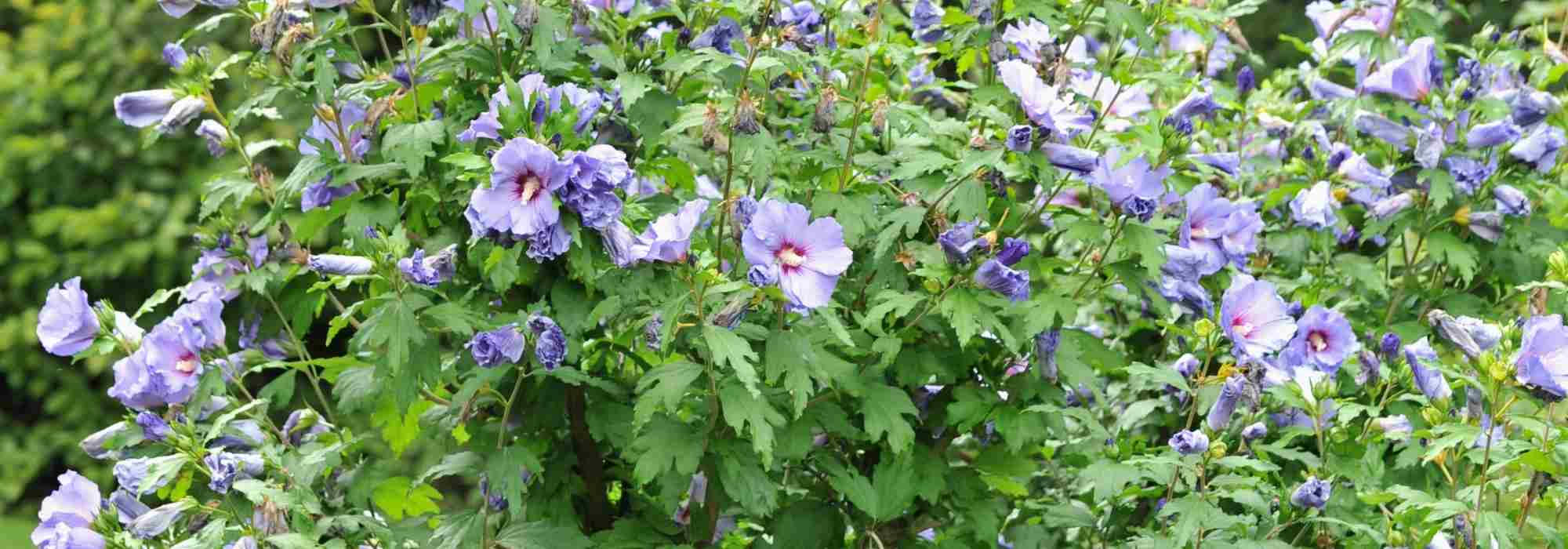
7 shrubs for a south-facing garden
Varieties suited to hot and sunny exposures
Contents
To showcase a garden facing full south, there are many shrubs thriving in full sun. Some enjoy the scorching sun but mild winters, while others acclimatise to the north of the Loire, provided they are planted in a very sunny spot sheltered from cold winds. Whether planted alone, in groups, or as part of a natural, exotic, or slightly wild scene, whether they are deciduous or evergreen, they are easy to grow and require little maintenance. Often hardy, they adapt to many climates and offer generous, fragrant or non-fragrant flowerings.
Discover our selection of shrubs that thrive in hot and dry conditions!
Ceanothus impressus ‘Victoria’
The variety ‘Impressus’ is one of those easy-to-acclimatise ceanothus. It forms, in just a few years, a beautiful evergreen shrub of medium stature, reaching 1.75 m to 2 m in all directions. It develops an extremely dense bush composed of small, glossy dark green leaves. As with all evergreen Ceanothus, the flowering is very abundant. From May to June, and throughout the summer for several months, this ball of foliage is covered with fragrant flowers of such an intense blue that they almost appear indigo.
This variety tolerates pruning well and can withstand cold down to -12°C when planted in good conditions, which is not the case for all ceanothus.
This ceanothus will thrive in a sunny position against a south-facing wall or even in the centre of a hot border or rockery. Once well established, it will be content with poor, low-calcium soil, even very dry in summer.
Along a wall, it will look wonderful in a complementary colour scheme with a yellow coronilla, with grasses like Chinese fountain grass, or with Caryopteris and Perovskia in a blue-toned border.
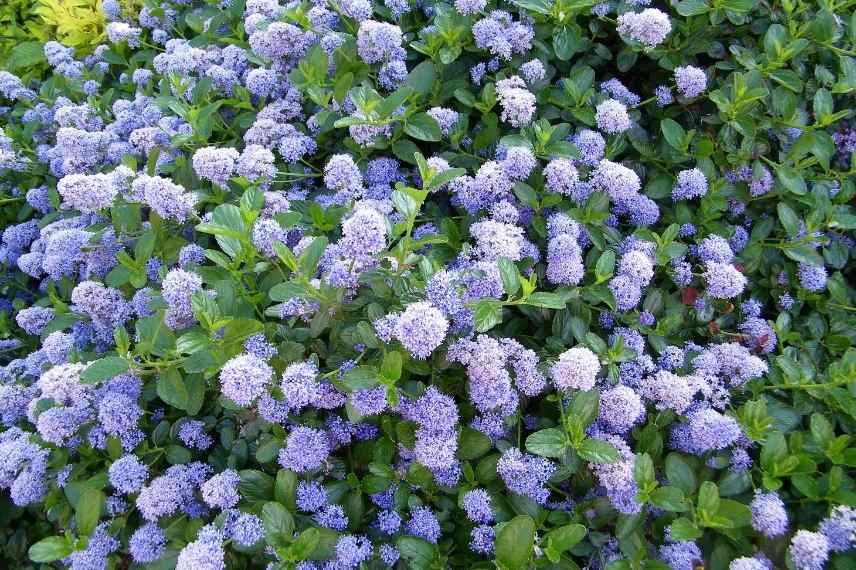
Ceanothus impressus ‘Victoria’
Read also
12 evergreen bushes to plant in full sunLagerstroemia indica 'Summer Charm Tonto'
Another shrub that only requires full sun and warmth to bloom abundantly! ‘Summer Charm Tonto’ is a small deciduous bush that charms us with its compact habit, reaching 3 m in height at ripeness, with a spread of 2.50 m, making this crape myrtle well-suited for small gardens. Its intense fuchsia pink summer flowering lasts from July to September, giving the bush the appearance of a giant bouquet. The green foliage turns reddish-brown in summer, with warm hues in autumn, and its highly decorative bark adds to its list of qualities!
Cold-resistant and disease-resistant, able to withstand dry and scorching summers once well established, this variety is easy to grow in many regions, even the less favourable ones, provided it is given a sunny spot sheltered from the wind.
In terms of soil, it prefers rich, cool, well-drained soil.
It will make a statement all summer long when planted alone, at the centre of a bed alongside other colourful summer flowers such as yarrow and Echinacea purpurea or in a flowering hedge alongside Buddleias.
Discover other Shrubs
View all →Available in 0 sizes
Available in 1 sizes
Available in 1 sizes
Available in 1 sizes
Available in 1 sizes
Available in 1 sizes
Available in 1 sizes
Available in 1 sizes
Available in 1 sizes
Available in 1 sizes
Cotinus coggygria 'Smokey Joe'
Here is a recent cultivar of the smoke tree with a compact habit that fits into all gardens, even the smallest. Once mature, the Cotinus coggygria ‘Smokey Joe’ typically reaches a height of 2 m and a width of 1.5 m. This small deciduous and bushy bush rewards us from June to August with its dazzling flowering, featuring feathery plumes in a vivid pink hue, reminiscent of hair. The bright green foliage from spring to summer transforms into stunning scarlet shades come autumn.
The smoke tree withstands cold and, above all, copes very well with heat. It thrives in full sun where its foliage will be vibrant.
Hardy down to -20 °C, never sick, and undemanding, it adapts to all regions and any well-drained soil, including calcareous or stony types.
It is perfect for brightening up a small informal hedge alongside buddleias or Eucalyptus gunii ‘France Bleu’ Rengun, or in a dry rockery with stachys and lavenders.
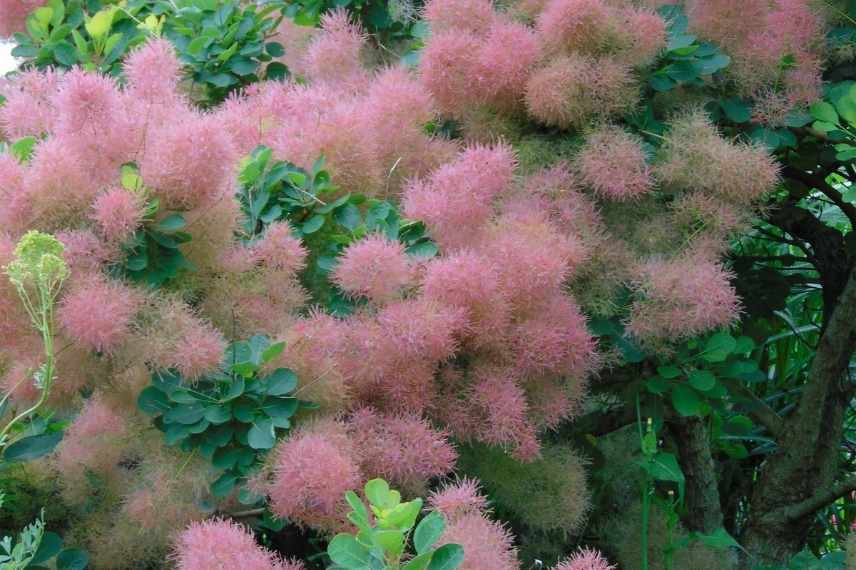
Cotinus coggygria ‘Smokey Joe’
Vitex agnus-castus 'Delta Blues'
To thrive, the variety ‘Delta Blues’ must be planted in full sun, in a warm location sheltered from cold, drying winds. Sensitive to frost, it is only hardy in the south of our country. You should place it against a sunny south-facing wall, as it is vulnerable to severe frosts. Once well established in well-drained soil that is not dry, poor, or even calcareous, it copes perfectly with sea spray and drought.
More elegant than the species, displaying a less unruly habit and a more colourful flowering, this beautiful selection has a graceful silhouette of 2.75 m in all directions. Throughout the summer, it showcases spikes of fragrant flowers in a vivid violet-blue that overwhelm a lovely deciduous foliage, which has a powerful peppery scent when crushed, hence its nickname “Pepper Tree” or “Monk’s Pepper”.
With its compact growth, it easily fits into small gardens, in a free-standing hedge or as a clump, surrounded by oleanders (in mild climates), Buddleias, Ceanothus or California Lilac, or even Tamarisks.
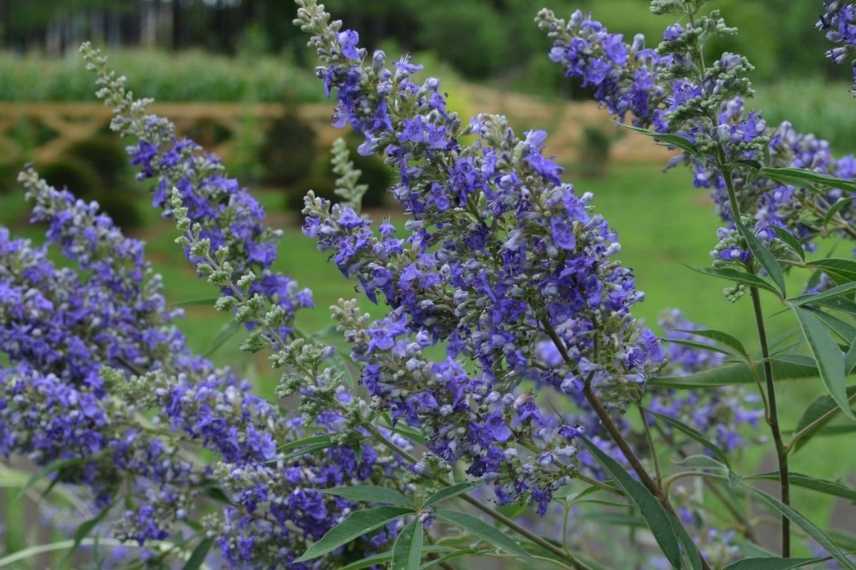
Vitex agnus castus ‘Delta Blues’
Callistemon viminalis ‘Hot Pink’
This bush thrives in mild climates and only requires sunshine! A bit hardier than classic varieties (down to -5°C), ‘Hot Pink’ flourishes in full sun as it likes to keep its roots warm. Plant it in the sunniest corner of the garden, ideally against a south-facing wall, to shield it from the cold as much as possible. Its cultivation in open ground is best reserved for regions south of the Loire and those with mild frosts.
The ‘Hot Pink’ selection quickly forms a rounded, ramified bush that can reach 2 m in height and 1.5 m in width.
On finely dissected grey-green foliage that remains evergreen in mild climates, the bush produces flowers from May to June, followed by successive waves throughout the summer, with stunning and original fuchsia-pink bottlebrush-shaped flowers adorned with stamens dusted with yellow pollen, earning it the nickname “bottlebrush”. They attract numerous pollinating insects.
A light, well-drained soil that is fresh to dry in summer will make it happy!
It can be used as a standalone plant, in a free and evergreen hedge, or at the back of a flowerbed, paired with a shrubby ceanothus or a Nerium oleander.
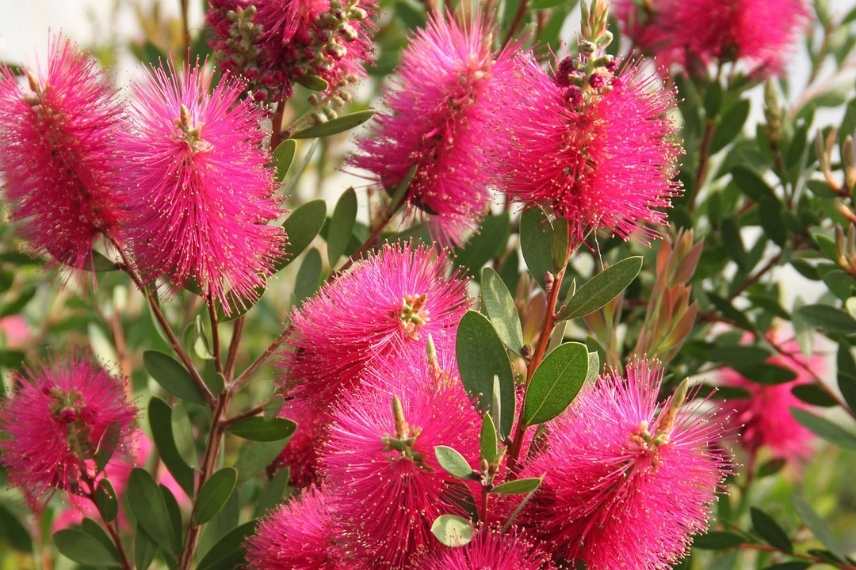
Callistemon viminalis ‘Hot Pink’
Hibiscus syriacus 'Blue Chiffon'
Even though it tolerates partial shade in our most exposed regions, it is in full sun that Hibiscus syriacus ‘Blue Chiffon’ truly thrives. This vigorous and very hardy bush adapts to all our climates, provided its roots are kept cool in summer. It enchants us with its superb flowering of crumpled double lavender-blue corollas revealed by dark green deciduous foliage. Highly floriferous, it blooms from June to October.
It has a very elegant and upright silhouette, reaching heights of 1.5 to 2.5 m.
It will create a flowering backdrop in a romantic border when paired with light perennials such as gauras, phlox, or asters. In a flowering hedge throughout the summer, it will accompany other flowering shrubs like buddleia.

Hibiscus syriacus ‘Blue Chiffon’
Punica granatum ‘Maxima Rubra’
This flowering pomegranate is a highly ornamental bush from June to September, featuring large, double, crumpled flowers like silk paper, measuring 6 cm in diameter, in vibrant vermilion red, along with its beautiful, glossy, deciduous green foliage. ‘Maxima Rubra’ develops into a small, bushy tree with a twisted silhouette, reaching heights of 3 to 5 m and a spread of 2.5 to 3 m after a few years. This variety never produces fruit.
This emblematic shrub of Mediterranean gardens is hardier than it appears (down to -17°C), adapting quite well in many regions as long as it enjoys warmth and sunlight in summer to bloom abundantly.
It makes a stunning specimen to plant alone or in a mass, associated with roses like Rosa ‘Jacques Cartier’, or to create a rustic hedge alongside olive trees, Pittosporum tobira, or cistus in a Mediterranean climate.
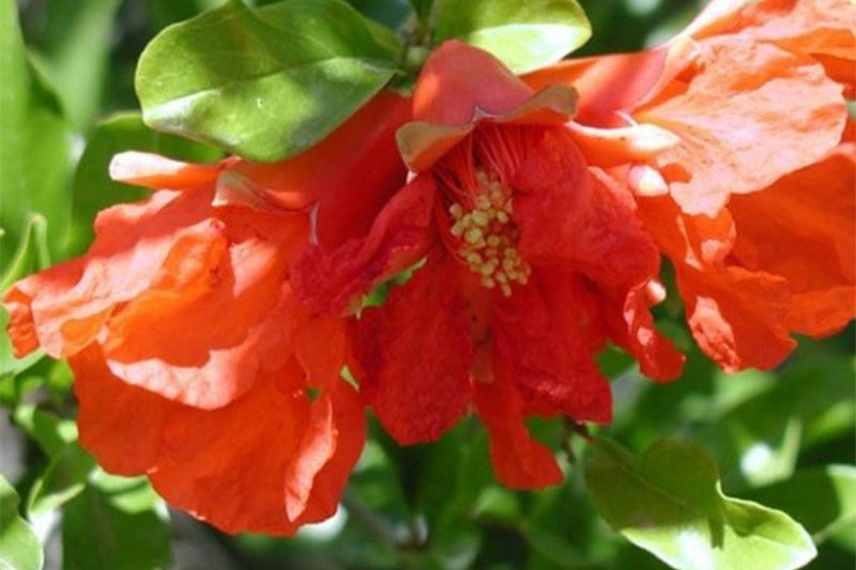
Punica granatum ‘Maxima Rubra’
- Subscribe!
- Contents
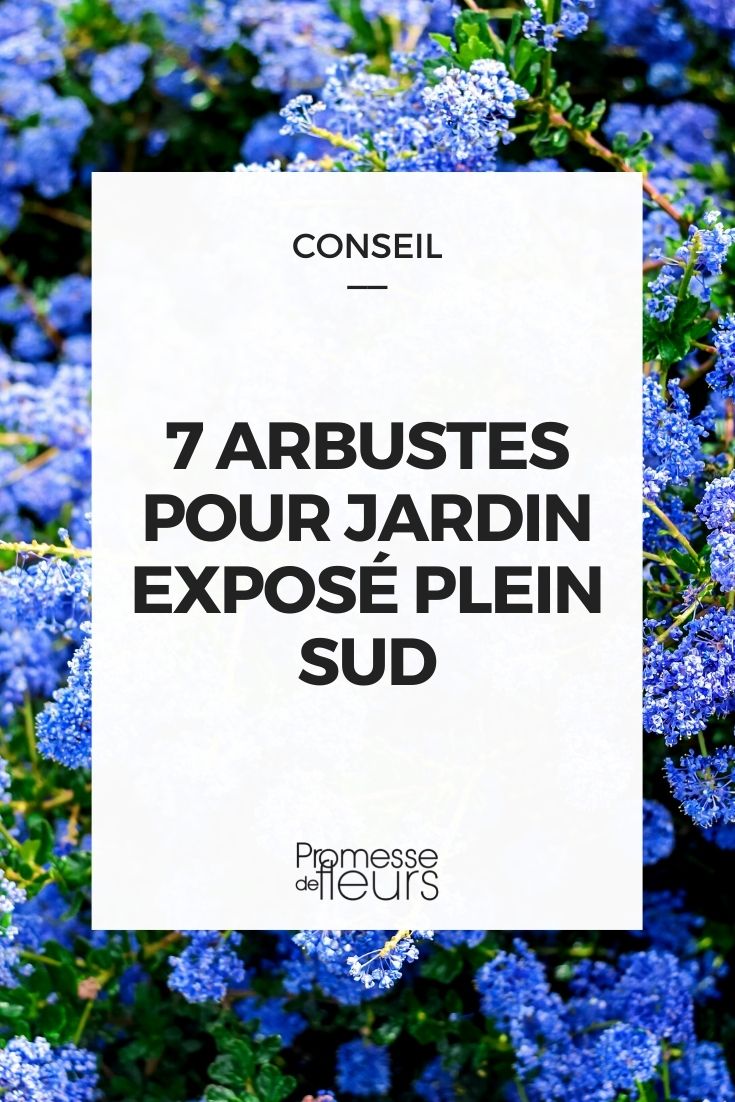
































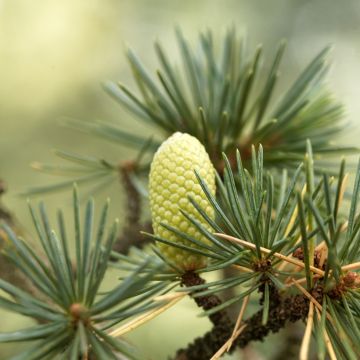
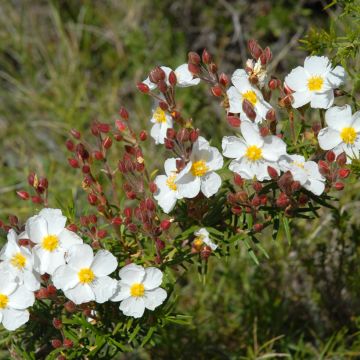
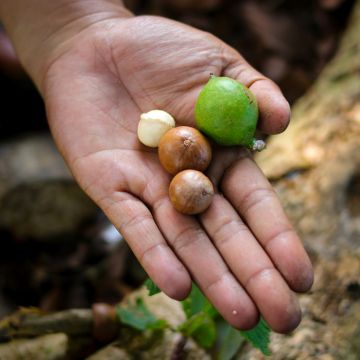

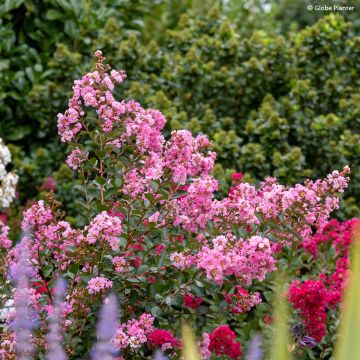

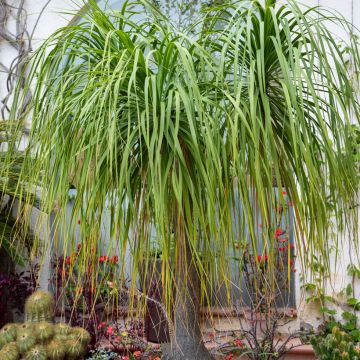
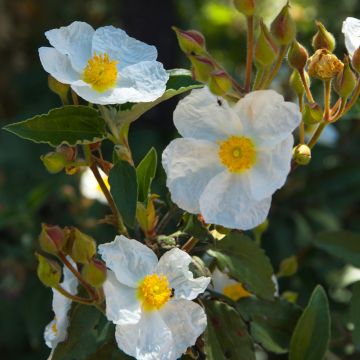
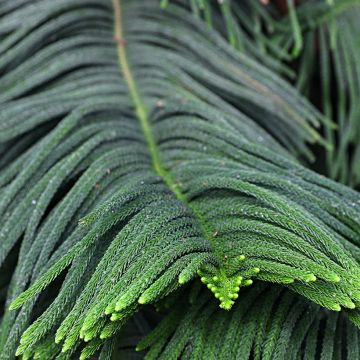
Comments